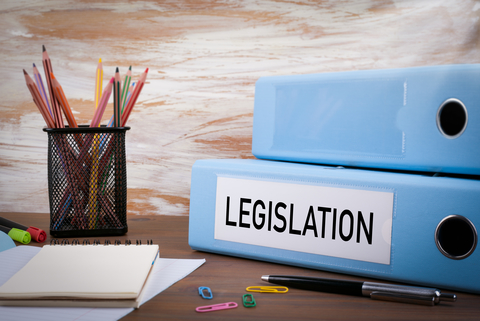 On December 27, 2020, a massive new law was signed by the President to fund the federal government through the end of fiscal year 2021 (September 30, 2021) and provide COVID-19-related relief to individuals and businesses. The new law is massive at 5,593 pages and is comprised of a number of different measures, including the COVID-related Tax Relief Act (which starts on page 1965) and the Economic Aid to Hard-Hit Small Businesses, Nonprofits, and Venues Act (which starts on page 2042).
On December 27, 2020, a massive new law was signed by the President to fund the federal government through the end of fiscal year 2021 (September 30, 2021) and provide COVID-19-related relief to individuals and businesses. The new law is massive at 5,593 pages and is comprised of a number of different measures, including the COVID-related Tax Relief Act (which starts on page 1965) and the Economic Aid to Hard-Hit Small Businesses, Nonprofits, and Venues Act (which starts on page 2042).
The following is a brief checklist of provisions that may affect your business; they’ll be fleshed out in future blogs.
PPP loans
The Paycheck Protection Program has been expanded:
- The program is reopened; it closes again on March 31, 2021.
- “Covered expenses” have been expanded to include covered operational expenses, such as software, cloud computing, and other human resource and accounting needs, covered property damage costs related to riots in 2020 not covered by insurance, covered supplier costs for expenditures pursuant to a contract, purchase order, or order for goods in effect prior to taking out the loan that are essential to the recipient’s operations at the time at which the expenditure was made, and covered worker protection expenditures like PPE.
- The covered period can end at the borrower’s choice of between 8 and 24 weeks after the origination of the loan.
- There will be a simplified loan application for amounts under $150,000.
- There are now “second draw loans,” which are for smaller and harder-hit businesses. The maximum loan is $2 million and the maximum number of employees is 300. The business needs to demonstrate a specified reduction in gross receipts and that original PPP funds have or will be used in full.
The IRS rule barring deductibility of expenses covered by forgiveness of PPP loans has effectively been repealed, so that expenses—payroll, rent, utilities—are deductible under normal tax rules even if the loan is forgiven.
EIDLs
The SBA’s Economic Injury Disaster Loans program has been extended. Initially, there was a $10,000 advance payment in the nature of a grant. The new law makes it clear that the grant is tax free. What’s more, those who obtained PPP loans as well don’t have to repay this amount.
Grants to “shuttered venue operators.”
There are direct payments by the SBA to live entertainment venues, independent movie theaters, talent representatives, and museums that have been forced to close due to government-mandated shutdowns. These grants can be used for payroll costs, rents, utilities, and PPE. They’re tax free, while expenses are tax deductible.
Tax deductions
Some limits to deductions have changed; some expiring deductions have been extended.
- The deduction for business meals in 2021 and 2022 is deductible at 100% of cost, rather than the usual 50% limit, but only for meals at restaurants.
- CARES Act breaks for charitable contributions have been extended for one year. This means C corporations can deduct cash contributions up to 25% of taxable income, individuals (owners of pass-through entities) can elect to itemize deductions for cash contributions up to 100% of adjusted gross income or deduct up to $300 if not itemizing, and the deduction for donations of food inventory is 25% instead of 15%. For 2021, the above-the-line charitable contribution deduction for non-itemizers is $600 for joint filers instead of the $300 per “taxpayer unit” cap that applies for 2020.
- The deduction for energy-efficient commercial buildings, which had been set to expire at the end of 2020, has been made permanent.
Tax credits.
Some credits have been extended and/or expanded.
- Employee retention credit is extended through June 30, 2021. It’s now 70% (instead of 50%) of qualified wages per employee up to $10,000 per quarter (instead of per year). The credit can be claimed even if you obtained a PPP loan.
- Paid sick leave and paid family leave credits are extended through March 31, 2021. Self-employed individuals can claim tax credits equivalent to this employee benefit. And they can opt to use prior year net earnings in determining average daily self-employment income for purposes of these two credit equivalents.
- Work opportunity tax credit is extended through 2025.
- Paid family and medical leave credit (not the mandated sick and family leave) is extended through 2025.
- New markets credit is extended through 2025.
- Low-income housing credit has been expanded to encourage more construction.
- Several energy-related tax credits have been extended.
Final thought
It’s going to take some time to digest this massive new law. There’s need for IRS guidance. Drafts of instructions for 2020 federal income tax returns will have to be revised. So stay tuned!


